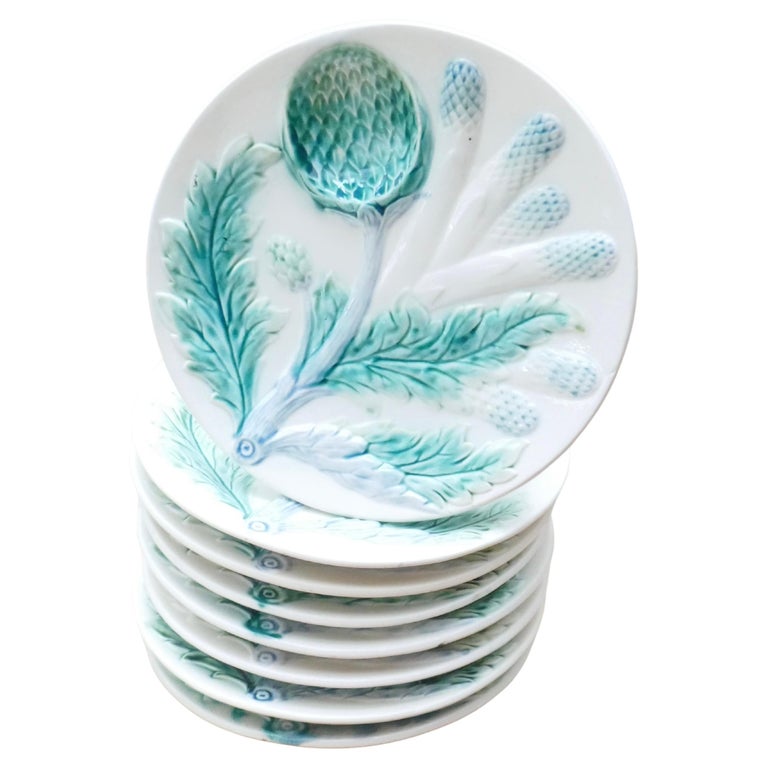
Sold - Eight Luneville French Faïence Barbotine Majolica Asparagus and Artichoke Plates
Lunéville majolica is known for its bold colors, particularly turquoise and green. The pottery produced an astounding variety of asparagus and artichoke plates, servers and tureens in multiple patterns. Also known are tea and coffee services and oyster plates.
Faience is a type of earthenware of high quality, which is made to look like Chinese porcelain with its opaque white glaze. This glaze was for the first time developed in the 9th century in Baghdad and was introduced in Europe through Spain and Italy. To check if a ceramic object is made of porcelain or faience, look for a chip. If the ceramic within is brown or beige, then it is a faience object. A chip of porcelain is always white.
Earthenware pieces are always baked first in an oven (biscuit), thereafter they are covered with a lead and tin oxide glaze and baked again. When baking the second layer, the oxides combine with the potash silicate in the clay giving the faience a white exterior. Lead-oxides will give an extra brilliance. Earthenware can be decorated with an underglaze. This will be applied before the earthenware is baked for the second time. The decoration will combine with the glaze layer when baked and hence burn in. Modifications are then no longer possible.
In Italy, France, Scandinavia and Spain this type of earthenware is called majolica. In the Netherlands it is called Delft blue or Delft faience. In the U.K. it is called English Delftware. The word faience origins from Faenza, a village in Italy where potteries were renowned in the middle of the fifteenth century.
Dimensions
Height: 1.19 in (3 cm)
Diameter: 9.45 in (24 cm)
Style
French Provincial
Materials and Techniques
Ceramic
Glazed
Place of Origin
France
Period
Late 19th Century
Request info




